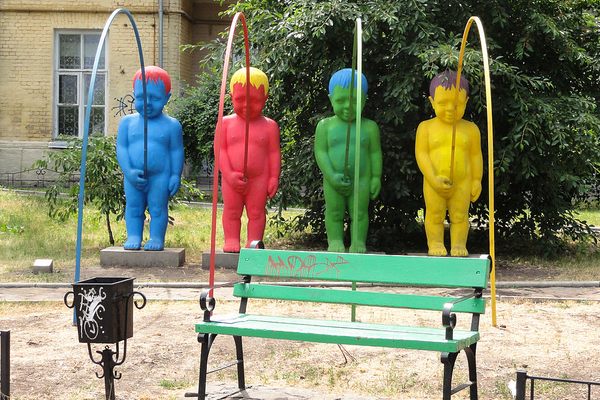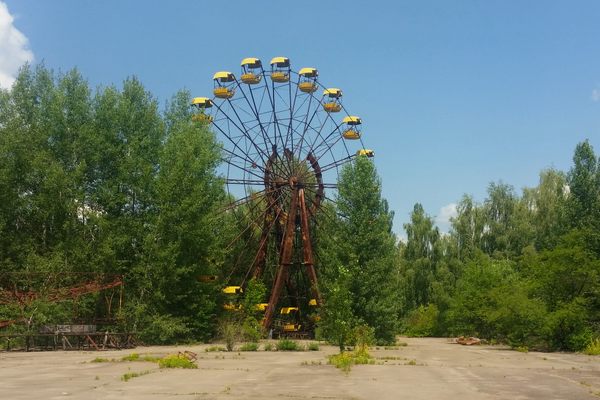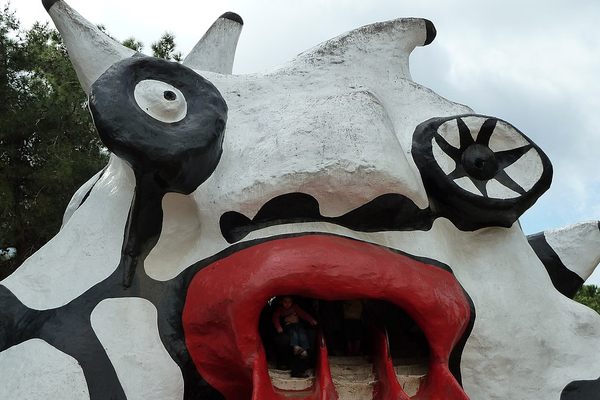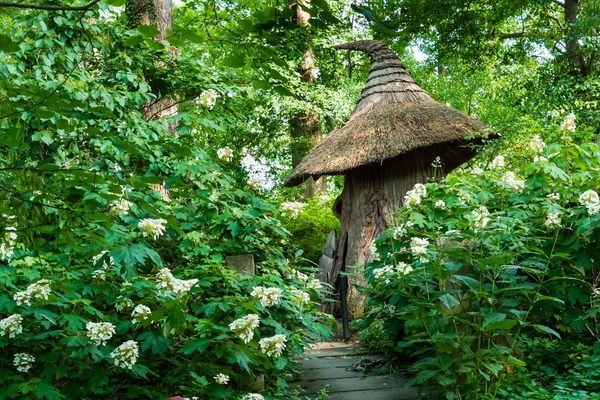The Essential Guide to Soviet Playgrounds: Fun & Games in the USSR
The Pripyat Ferris Wheel (photograph by Alexandra Jade Flintoff)
In this guide, we are drawing back the Iron Curtain to have a little look at life in the days of the Soviet Union. Initially, we’ll be looking at city playgrounds… but from there we’ll take a step back to examine other popular leisure venues spread far and wide across the former USSR. Many of these sites still enjoy regular use, while others have long since been abandoned — in which case we’ll be wading through the dust to uncover clues about their past.
So without further ado, allow us to introduce you to the Essential Guide to Soviet Playgrounds: our compendium of fun and games in the USSR.
SOVIET PLAYGROUNDS

Children’s playgrounds were prolific in the USSR. They formed an integral part of the urban landscape, and by the 1970s and 80s these basic metal affairs appeared in almost every park across many of the larger Soviet cities. They were built outside schools, beneath church towers, and on the side of roads.
As with many of the other fittings associated with the USSR, playground accessories were usually produced en masse at large manufacturing plants. As a result, there was a tendency for these to follow repetitive patterns and designs: with playgrounds and parks from Eastern Europe to Russia’s Pacific Coast often featuring identical sets of swings and seesaws, rockets and roundabouts, bridges and monkey bars.
A crude Soviet-style slide stands in a churchyard (photograph by Darmon Richter)
A basic playground beside a city street (photograph by Darmon Richter)
We can probably all picture these playgrounds — rusted bars, simple metal frames planted in public spaces and painted up in rainbow colors. Contemporary Western visitors have likened these Spartan play sets to army obstacle courses, with their brutal construction and generous use of old tires.
Well, it’s not far from the truth. Their basic construction meant that Soviet playgrounds were cheap to produce, while social dynamics had an effect in dictating their widespread popularity; in many families both parents would work during the day, and so parks in the Soviet Union were often populated by unattended children. These easy playground set-ups provided the perfect solution.
Ready for blast off! (photograph by Lance Roberts)
Statue of a policeman incorporated into a Soviet playground (photograph by Lance Roberts)
At best, they were bland, but at worst these metal-framed horrors were potential death traps. It’s clear that many of these playgrounds would never have passed safety inspections in the West.
Looking at examples of these sites across the length of the former USSR, one soon notices an effect of individualization. While many of these playgrounds came from the same mould, it would be common for them to receive a different treatment in each town — personalized by the communities who used them. This could be as simple as a different paint job, but in many cases the locals would get creative. Sculptures were sometimes formed from wood or metal, even from large stacks and towers of car tires.
“Peeing Colors”: an installation in a park in Kiev (photograph by Guillaume Speurt)
As towns and cities across the Soviet Union began adding their own embellishments to the standard issue playground sets, the results ranged from merely “distasteful” (such as this installation formed from urinating children, in Kiev) through to others depicting creatures seemingly born from nightmares.
Next we’ll be taking a look at some of the stranger examples of Soviet playground design.
MYTHS, LEGENDS, & NIGHTMARE CREATURES
Many of the designs incorporated into children’s playgrounds in the USSR embraced themes of myth and folklore, with fantastical creatures or historical characters constructed from whatever materials were readily to hand. Some of the resultant images might not have been considered appropriate for children, however, if judged against Western standards.
Strange creature sighted in a park in Terebovlia, Ukraine (photography by nordprod)
Cossack sculptures at that same park in Ukraine (photograph by nordprod)
In the West, we have comparatively reserved ideas about what constitutes a child-friendly image. Even our evil characters so often get the “Disney” treatment, becoming harmless caricatures rather than true vessels for terror. The Soviet architects, on the other hand, seemed to be designing creatures plucked straight from their darkest dreams… or perhaps, in some cases, from a particularly bad acid trip.
This is exactly the sort of thing that would have given me nightmares as a child (via Voffka)
Let’s hope the blood was added later by vandals (via Dark Roasted Blend)
Take the following batch of photographs, for instance. These were taken at an abandoned Young Pioneer Camp, located in a forest just north of Moscow. The “Young Pioneer Organisation” was initially set up by Lenin himself — a similar concept to Baden-Powell’s “Scout Association,” though according to some commentators, these camps served to indoctrinate children with communist ideologies alongside their stated aim of enriching education and life skills. Different camps specialized in a range of subjects and fields.
The location pictured below, with its strange and often intimidating likenesses of creatures both factual and fictitious, may well have been involved in teaching one of the natural sciences.
An abandoned Young Pioneer Camp in a forest in Russia (photograph by Darmon Richter)
The camp is decorated with larger-than-life sculptures of bizarre creatures (photograph by Darmon Richter)
Some of the installations around the camp are positively frightening (photograph by Darmon Richter)
If you want to see more you can read a walkthrough tour of the Young Pioneer Camp, or visit the Detskiy Dvor community on Livejournal, dedicated to sharing images of peculiar children’s playgrounds. Next up, we’ll be moving on to take a look at another staple of entertainment in the Soviet Union: the circus.
THE STATE CIRCUS
The circus was such a defining aspect of culture in the Soviet Union that sad clowns and dancing bears have, over time, worked their way into our collective cultural stereotypes for the USSR.
While the Marxist-Leninist State is largely remembered for the machine-like efficiency with which it managed its industrial and military efforts, the state was also responsible for catering to the entertainment of its citizens; and thus in 1919, in the midst of the Russian Civil War, came the nationalization of the Moscow State Circus.
Yakov Smirnov’s Moscow Circus (photograph by Don Ford)
Moscow State Circus Big Top, UK (photograph by GrahamN/Wikimedia)
When Lenin stepped in as Premier of the Soviet Union in 1922, his government promoted the circus far and wide across the USSR; in the years that followed, the Soviets would build more than 70 dedicated circus buildings (and by 1957 these were managed by the specially formed “Soyuzgoscirk,” or “Centralised Circus Administration”). In 1929, the USSR celebrated the opening of the Moscow Circus School. This state-run circus organization was the first of its kind anywhere in the world, and here students would train in the various skills and performance techniques of the trade.
This gave birth to a new form of elite; thousands of performers were employed by the state to work in its various circus venues, and these artists earned numerous benefits in return. Circus performers could often expect access to more desirable housing and retirement packages, in addition to childcare support, maternity leave, and even travel privileges.
Oleg Popov on stage (photograph by Patrick Glanz)
One such performer was Oleg Popov. Popov graduated from the Moscow circus school in 1949, six years later going on to become the first USSR clown to perform for crowds in the West. By 1969, he had been honored with the title “People’s Artist of the USSR.” Now aged 83, Popov is still performing, and is perhaps the most famous circus clown in history.
Soviet circus buildings themselves tended to be grand, eye-catching monuments — their design often giving the impression of a saucer, a disc, or a crown. The most famous of these was, of course, in Moscow: the Great Moscow State Circus, or Bolshoi Circus.
The Bolshoi Circus in Moscow (photograph by Simm/Wikimedia)
Rising to a height of 36 metres above Vernadsky Prospekt, this grand monument was built in 1971 and able to accommodate as many as 3,400 spectators. Performance arenas were located both above and below the ground, with two shows daily.
Nowadays, the company has been privatized. Operating as the “Great Moscow State Circus,” the organization tours the world with a staff of several hundred performers. Moscow’s Bolshoi Circus, meanwhile, remains in the possession of the state, while many other circus buildings across the former USSR have been allowed to fall into ruin.
An abandoned Soviet circus in Moldova (photograph by Darmon Richter)
The images below detail the decay at one such building: an abandoned Soviet circus in Chisinau, Moldova. Moldova is now an independent republic, but at the time the circus was built in 1981, it was recognized as the “Moldavian Soviet Socialist Republic.”
While this particular circus far outlived the Soviet Union before eventually facing closure in 2004, the design, layout, construction style, and even its interior decor are all highly reminiscent of those styles popularized by the USSR.
Detail of the circus featuring a headless clown (photograph by Darmon Richter)
Stepping into the ring of an abandoned Soviet circus (photograph by Darmon Richter)
Faded murals inside the circus (photograph by Darmon Richter)
Detail of decaying sculptures inside the circus building (photograph by Darmon Richter)
TO INFINITY & BEYOND
To say that the Soviet Union was preoccupied with space exploration, would be an understatement. Putting men and women into space was high on the agenda, particularly in the later days of the Soviet Union — and the successes of the Soviet space program were lauded with monuments, parks, museums, and even postage stamps.
Moscow’s Gorky Park roller coaster (photograph by A.Savin/Wikimedia)
No surprise then, that the advent of roller coasters and other mechanical fairground rides was heralded across the USSR with a wealth of space-themed parks and funfairs. Take a look at this video for example, to see a rocket-themed ride at the Luna Park in St Petersburg…
…and then take a look at this video, showing the results of a snapped cable which left ten passengers on the ride dangling high above the fairground and praying for their lives.
That brings us to one of the main concerns raised with Soviet fairground construction. Much like the playgrounds we started this guide with, there was a tendency for Soviet theme parks to be constructed with similarly simplistic components and with an apparently blasé attitude towards health and safety.
Pond in Gorky Park, Moscow in 1982 (via Wikimedia)
Though parks in Russia nowadays are governed by the RAAPA (Russian Association of Amusement Parks and Attractions), there are still countless fairground rides scattered across the country — and beyond, in the former Soviet States — whose construction dates back to the more ramshackle techniques of the USSR. With that in mind, one might think twice before getting onboard anything that looked like this.
Perhaps the most photographed of all funfairs built during the Soviet years is the Luna Park in Pripyat, deep within Ukraine’s Chernobyl Exclusion Zone. The park — consisting of a Ferris wheel, swing boats, bumper cars, and numerous other rides – was never official opened. Scheduled for a grand May Day opening in 1986, the Chernobyl disaster on April 26, just a few kilometers from the park, led to the full-scale evacuation of the city.
The only usage Pripyat’s Luna Park ever saw was several hours of operation on April 27, 1986, when the doors were opened prematurely to offer some small entertainment to the city’s residents, shortly before the official evacuation notice was broadcast.
Nowadays some areas of the heavily corroded park have been known to emit radiation signatures as high as 25 µSv/h — some of the highest readings in the whole city. It remains a popular destination for photographers, however, with the ferris wheel in particular coming to stand as a powerful visual symbol for the Chernobyl disaster.
The Pripyat Ferris Wheel (photograph by Darmon Richter)
Bumper Cars at Pripyat Luna Park (photograph by Darmon Richter)
The Carousel at Pripyat Luna Park (photograph by Darmon Richter)
To summarize, the Soviet style of theme park design is notable for its ethos of attempting to put on a grand spectacle, but for doing so on an incredibly tight budget. The Soviet Union was notorious for its statues, monuments, and elaborate architectural facades, so often constructed from cheap materials such as concrete. Their fairgrounds were no different — entertainment venues whose over-the-top displays of cultural wealth belied the low-grade construction techniques of an impoverished state.
THE SOVIET LEGACY
It would be easy to end the guide here; but by way of an epilogue, it’s interesting to note just how far and wide the Soviet influence spread. At its height the USSR reached from Eastern Europe and the Baltic States right across Eurasia, down into the Caucasus, then all the way east until it brushed against the tip of Alaska. But its influence extended further still. Even countries which were not officially recognized as states of the USSR, still held very close ties; from Bulgaria in the west, to Mongolia in the east.
Soviet-era playground outside an abandoned school in Bulgaria (photograph by Michael Kötter)
Playgrounds and funfairs in the style illustrated here became a common phenomenon not just in the countries where they were standard issue, but also in those that looked to Moscow for guidance.
Take the “Kulturpark Plänterwald” for example, an entertainment park opened in 1969 beside the River Spree, on the communist east side of Berlin. In later years it would become known simply as “Spreepark.”
Kulturpark Plänterwald in Berlin, April 1985 (via Wikimedia)
The Kulturpark Ferris Wheel today (photograph by Michael Kötter)
A Waterslide at Spreepark, Germany (photograph by Robert Cannon)
The abandoned Spreepark roller coaster (photograph by Rebecca Litchfield)
Here we can see a similar proliferation of bare metal framework and simple mechanical rides to those featured in parks across the Soviet Union. It’s the same principal at play: a grand show of modern leisure facilities, for all the world a declaration of wealth and quality of life, but on closer inspection these attractions proved threadbare and occasionally questionable in their construction.
Then there’s North Korea. Still boldly flying the flag of communism ”Kimilsungism,” the Hermit Nation’s love for amusement parks reads like a page straight out of the Soviet textbook.
A rickety roller coaster at Mangyongdae Funfair, North Korea (via Atlas Obscura)
There are three main funfairs on offer in the North Korean capital, Pyongyang, far more than one might expect from a city of this size. The Kaeson Park is the most modern of the three, opened in 1984. This 40-hectare park features giant swing boats, carousels and a high-speed vertical roller coaster, which unlike most of the city, are illuminated at night with bright and colorful lights.
The two older parks — Mangyongdae and Taesongsan — adhere more closely to the designs laid down by the USSR. These large, sprawling parks feature rides constructed from bare metal frameworks, a brutal and industrial aesthetic complimented perfectly by ominous patches of rust and corrosion. Take a look at the images here — and then compare them to these fantastic publicity shots taken from the opening of the Mangyongdae Funfair.
Another rust-covered ride at Mangyongdae Funfair, North Korea (via Atlas Obscura)
And with that, we’ve reached the end of our roller coaster ride through the leisure venues of the Soviet Union. To play us out, here are a few more of those nightmarish playground designs from Detskiy Dvor.
Sweet dreams!
Tyre statues decorate a park in the USSR (via Detskiy Dvor)
Did this elephant look any less disturbing before it started falling apart? Probably not. (via Detskiy Dvor)
Vaguely unsettling fish faces decorate a modern playground (via Detskiy Dvor)
Honestly, what were the designers even thinking? (via Detskiy Dvor)










Follow us on Twitter to get the latest on the world's hidden wonders.
Like us on Facebook to get the latest on the world's hidden wonders.
Follow us on Twitter Like us on Facebook